
Technical shading systems – solutions for glazed surfaces and atypical spaces
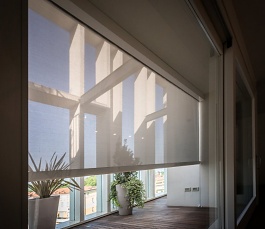 |
Initially, work focused on the development of fabrics that would serve users much better. Unlike blinds or window films, fabric shading can be retracted, so when the sun isn't shining, building users can enjoy natural light and views.
Technical fabrics allow for controlled penetration of daylight, an unobstructed view outside, and depending on the type of fabric, can block between 88% and 96% of negative solar radiation. In summer, temperatures in rooms of buildings with more than 50% glazed areas can rise by up to 15 degrees Celsius compared to the outdoor temperature. By simply installing exterior textile roller blinds, we can reduce this temperature by the same amount. Conversely, in winter, these same blinds prevent heat loss. This protection is also passive - requiring minimal use of artificial light and/or air conditioning.
Today, there is an abundance of technical fabrics on the market - the most well-known in the field of architecture are certainly Soltis by Serge Ferrari or the Mermet brand. However, other manufacturers are keeping up; lesser-known brands are intensively working on developing innovative fabrics with silver or gold threads, and recycled coverings made from PET bottles, among others. We also work with these fabrics in our projects. We can identify the most suitable covering for specific needs - considering factors such as openness, thermal and solar absorption, or decor.
Fabrics with a suitable system can shade windows and pergolas
The most practical use of technical fabrics is seen in products like Screen Zip. The fabric is securely anchored in a double profile using a zip system. Screen Zip serves as protection against the sun, but also against insects and wind. Its use is not limited to just shading windows - these screens are very popular for shading pergolas.
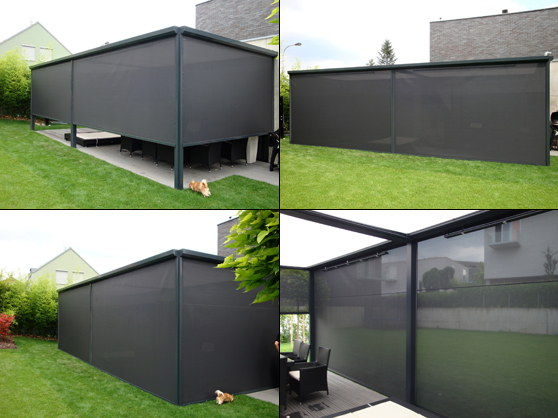 |
However, work also needed to begin with the shape of buildings. For this, we chose the best possible partner.
For over 30 years, Guthrie Douglas has been pushing the boundaries of design for automatic shading systems. The English systems can shade almost any construction regardless of angle, shape, or location.
Great design often lies in what cannot be seen. The Tess series 100 is designed to ensure maximum reliability while also being discreet. Conference rooms, skylights, restaurants, hotel lobbies - here, shading glazed surfaces is necessary, but without drawing attention to the shading. The shading acts as an accessory. It is a functional element that adds comfort without overshadowing the style of the place. Subtle guiding elements, a wide range of coverings to choose from, and precise technical execution meet the most demanding requirements of investors and architects.
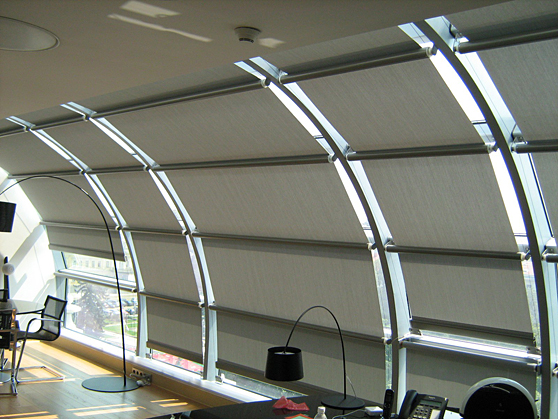 |
TESS 100 - Interior system without guidance
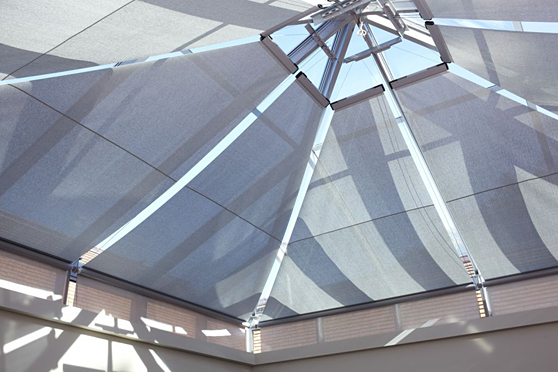 |
TESS 101 - Interior triangular system
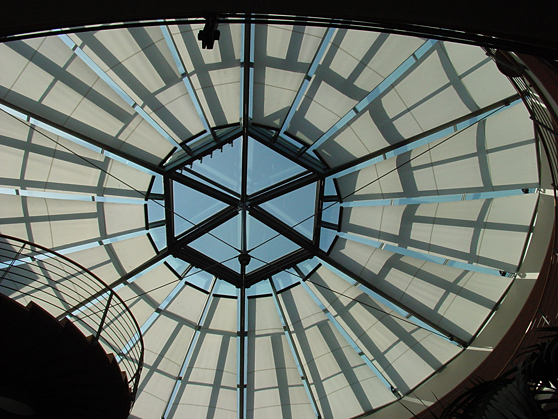 |
TESS 102 - Interior trapezoidal system
Bohemiaflex CS, s.r.o.
www.bohemiaflex-cs.cz
www.bohemiaflex.com
More about technical fabrics: http://www.bohemiaflex-cs.cz/clanky-screenove-rolety-do-oken-i-na-pergolu/
More about Guthrie Douglas at http://www.archiweb.cz/news.php?type=&action=show&id=21402 or http://www.gdsolarcontrol.com
The English translation is powered by AI tool. Switch to Czech to view the original text source.
0 comments
add comment












